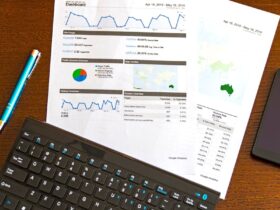As energy costs continue to surge nationwide, with average household electricity bills rising 15% in the past year alone, homeowners are seeking lasting solutions to combat mounting utility expenses. Solar panels have emerged as a transformative answer, offering both immediate relief from high energy bills and a path to sustainable living. By harnessing clean, renewable energy, modern solar installations can slash monthly electricity costs by 40-90% while significantly reducing your carbon footprint. For homeowners frustrated by unpredictable energy prices and growing environmental concerns, solar technology provides a proven way to take control of their energy future. This comprehensive guide explores the critical aspects of residential solar adoption, from understanding system efficiency and calculating your home’s solar potential to navigating installation processes and maximizing long-term savings. Whether you’re considering your first solar investment or looking to optimize an existing system, you’ll discover practical strategies to make solar work for your home.
Understanding Solar Panel Efficiency for Maximum Output
Solar panel efficiency represents the percentage of sunlight converted into usable electricity, with today’s leading panels achieving 20-23% efficiency rates. Modern monocrystalline panels deliver superior performance through single-crystal silicon construction, offering the highest efficiency and smallest footprint. Polycrystalline panels provide a cost-effective alternative with slightly lower efficiency, while thin-film technology trades efficiency for flexibility in unique installations. Panel performance naturally declines by 0.5-1% annually, making initial efficiency crucial for long-term output.
Factors Influencing Solar Panel Efficiency
Panel orientation and tilt angle significantly impact energy production, with south-facing installations at 30-45 degrees typically optimal for North American homes. Geographic location determines peak sun hours, with desert regions seeing up to 6-7 hours daily compared to 4-5 hours in northern areas. Temperature affects performance, with every degree above 77°F reducing efficiency by 0.5%. Partial shading from trees or structures can disproportionately decrease output, making microinverters or power optimizers valuable additions. Regular cleaning removes efficiency-reducing dirt and debris, while professional inspections ensure optimal performance. Advanced monitoring systems track real-time production, allowing quick identification and resolution of efficiency issues. Emerging technologies like PERC (Passivated Emitter and Rear Cell) can boost efficiency by up to 1-2% through improved light absorption and reduced electron recombination.
Residential Solar Energy: Calculating Your Home’s Potential
Determining your home’s solar potential begins with a thorough assessment of your property’s physical characteristics and energy requirements. A south-facing roof with a 30-45 degree pitch typically offers optimal conditions, though east and west exposures can still yield substantial power generation. Most homes require 400-800 square feet of unobstructed roof space for a system that offsets 100% of electricity usage. Structural integrity evaluation ensures your roof can support the additional 2.5-4 pounds per square foot that solar panels add.
Evaluating Your Energy Needs
Start by analyzing 12 months of utility bills to identify seasonal consumption patterns and peak usage periods. The average U.S. home uses 10,000-12,000 kWh annually, requiring a 6-8kW solar system. Consider future needs like electric vehicle charging, which can add 2,400-4,800 kWh yearly. Net metering policies in your area influence system sizing strategy – generous compensation for excess production may justify larger installations. Online calculators like PVWatts combine local weather data, roof characteristics, and energy consumption to estimate optimal system size and projected savings. Factor in 20-30% additional capacity for potential efficiency losses and increased future demand.
The Solar Panel Installation Process Demystified
The journey to solar power begins with a professional site assessment to evaluate roof condition, structural integrity, and optimal panel placement. Certified installers conduct detailed shade analysis and electrical load calculations to design your system. While DIY installations may seem cost-effective, they risk voiding equipment warranties and violating local building codes. The permitting process typically takes 2-4 weeks, requiring detailed system designs, structural calculations, and electrical diagrams. Professional installers handle this paperwork, coordinating with local authorities and utilities.
Post-Installation Inspection and Activation
Once installation begins, crews mount racking systems using specialized flashing to prevent roof leaks. Panel placement follows optimized layouts for maximum sun exposure, with proper spacing for ventilation and maintenance access. Electrical work involves installing inverters, running conduit, and establishing proper grounding systems. After completion, local building inspectors verify code compliance and safety standards. The utility company then installs a bi-directional meter and grants permission to operate. System activation includes configuring monitoring software, testing performance metrics, and establishing baseline production data. Most installations complete within 1-3 days, though the entire process from contract to activation typically spans 2-3 months due to permitting and inspections. Professional installers provide detailed system documentation and operational training, ensuring homeowners understand their new solar investment.
Optimizing Your Solar Investment for Long-Term Savings
Maintaining peak solar system performance requires a proactive approach to care and monitoring. Schedule professional inspections twice yearly to check electrical connections, mounting hardware, and overall system health. Clean panels quarterly using soft brushes and specialized solar cleaners, avoiding abrasive materials that could damage protective coatings. Modern monitoring systems provide real-time production data through smartphone apps, alerting you to potential issues before they impact performance. Consider adding reliable battery storage solutions, such as those from EcoFlow, to maximize self-consumption and provide backup power during outages – today’s lithium systems offer 10+ years of reliable service with minimal maintenance.
Realistic Savings Timeline Projection
Most residential solar installations achieve complete payback within 5-8 years, depending on local utility rates and available incentives. With average electricity prices rising 3-5% annually, solar savings compound over time. A typical 8kW system can save $1,500-2,500 annually at current rates, while increasing property values by 4-6%. Federal tax credits currently cover 30% of system costs through 2032, while state and utility incentives can reduce upfront costs by an additional 10-30%. Many homeowners achieve 15-20% ROI – substantially higher than traditional investments. Regular maintenance and monitoring help ensure these returns by maintaining optimal system performance throughout its 25-30 year lifespan.
Investing in a Sustainable Energy Future
Solar panel technology has evolved into a reliable, cost-effective solution for homeowners seeking to reduce energy costs and environmental impact. By understanding key efficiency factors, conducting thorough site assessments, and following proper installation protocols, you can maximize your solar investment’s potential. Modern solar systems offer sophisticated monitoring capabilities, allowing precise tracking of energy production and consumption patterns. With federal tax incentives at 30% through 2032, rising utility rates, and improved technology driving down costs, there’s never been a better time to invest in solar energy. Take the first step by scheduling consultations with certified local installers who can provide detailed site assessments and customized system proposals. Whether your priority is reducing monthly bills, increasing home value, or supporting environmental sustainability, solar power delivers measurable benefits that compound over time. By embracing this proven technology, you’re not just investing in your home – you’re investing in a cleaner, more sustainable energy future.













































Leave a Reply